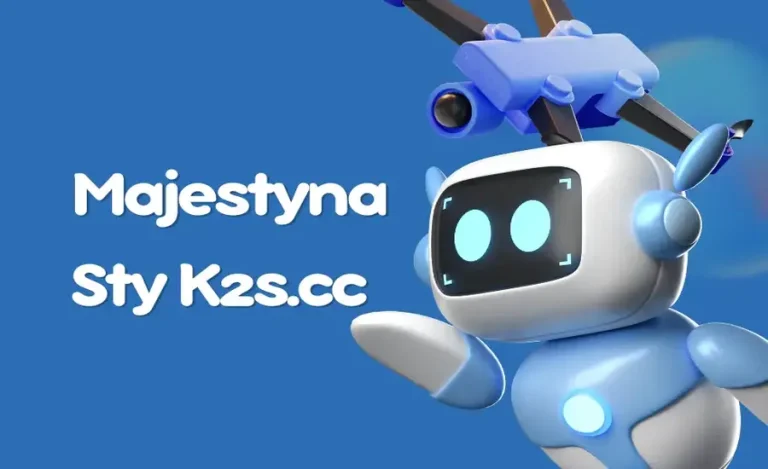Linuxia: A Comprehensive Guide to Linuxia
Introduction
Are you curious about the world of open-source operating systems? Look no further than Exploring Linuxia! In this blog post, we will delve into the intricate details of Linux, the popular open-source operating system that powers a vast array of devices worldwide. From its humble beginnings to its global adoption, we will explore the history, philosophy, and vibrant community behind Linux. Discover how Linux’s collaborative nature and open-source principles have revolutionized the tech landscape, fostering innovation and empowering users. So buckle up and get ready to immerse yourself in the fascinating world of Linuxia.
A Brief History of Linux: From Creation to Global Adoption
The inception of Linux traces back to 1991, when Linus Torvalds, then a student at the University of Helsinki, embarked on a personal project to create a new operating system kernel. What started as a hobby project quickly transformed into a global phenomenon, thanks to its open-source nature. This pivotal decision to make the project free and open-source under the GNU General Public License allowed developers from around the world to contribute to its development, significantly accelerating its growth and versatility.
Linux’s journey from a modest beginning to becoming the backbone of countless systems across the globe is a testament to the power of community collaboration and innovation. Its adaptability made it a perfect fit not only for desktop computers but also for servers, supercomputers, and later, mobile devices, embedded systems, and more. The operating system’s reputation for stability, security, and efficiency fueled its adoption across various sectors, including business, education, and government infrastructures.
The rapid evolution of Linux can also be attributed to the formation of major organizations, such as the Linux Foundation, which furthered research, development, and adoption of the OS on a grand scale. Strategic partnerships with big tech companies also played a crucial role in integrating Linux into commercial products and services, cementing its place in the tech ecosystem.
As Linux continues to grow, its journey from a modest kernel to a cornerstone of modern computing highlights the unmatched potential of open-source software in fostering innovation and driving technological advancement on a global scale.
Understanding the Linux Philosophy and Community
At the heart of Linux is a philosophy that values collaboration, transparency, and open innovation above all. This guiding principle has cultivated a robust and vibrant community of developers, users, and enthusiasts who are committed to pushing the boundaries of what this open-source operating system can achieve. The community ethos encourages individuals from all corners of the globe to contribute, irrespective of their skill level or expertise. This inclusivity has led to the proliferation of numerous open-source projects under the Linux umbrella, each designed to enhance and expand the operating system’s capabilities and user experience.
Central to the Linux community is the idea that by sharing knowledge and resources, the whole ecosystem benefits. Forums, mailing lists, and online platforms abound, offering support, advice, and collaboration opportunities. These spaces allow for the exchange of ideas, solving of problems, and dissemination of knowledge, ensuring that the community remains at the forefront of technological advancement and innovation.
Contributions to Linux are not limited to code. Documentation, design, testing, and feedback are equally valued, ensuring that there are entry points for everyone interested in being part of the community. This holistic approach to community involvement ensures that Linux remains adaptable, user-friendly, and ahead of the curve.
The essence of the Linux philosophy and its community is the belief that technology should be accessible, free, and open to modification. It’s this belief that continues to drive the exponential growth and diversification of Linux, making it a cornerstone of modern computing and a beacon for the open-source movement worldwide.

The Anatomy of a Linuxia System: Kernel, Shell, and Beyond
Diving deeper into the structure of a Linux system reveals its fundamental components, each playing a vital role in its operation and user experience. At the core of any Linux system lies the kernel, the critical layer that interacts directly with the hardware. It is responsible for managing system resources, such as CPU, memory, and peripherals, ensuring efficient and secure operations. The kernel’s tasks include handling system calls, executing processes, and managing file systems, among others.
Moreover, above the kernel, the shell acts as the interface between the user and the kernel, interpreting commands from the user and turning them into actions the kernel can execute. Shells come in various flavors, such as Bash (Bourne Again SHell) and Zsh (Z Shell), each with its unique features and scripting capabilities. Users interact with the shell through a command-line interface (CLI), typing commands to perform operations like moving files, launching programs, and navigating directories.
Beyond the kernel and shell, the Linux system is enriched by a wide range of software packages that cater to almost every need. These packages include utilities, libraries, and applications, enabling users to customize their environment to their liking. From graphical user interfaces (GUIs) like GNOME and KDE Plasma to a plethora of tools for development, multimedia, and networking, the extensibility of Linux is one of its most compelling attributes.
Together, these components form the backbone of a Linux system, providing a powerful, flexible, and secure environment for computing. Each layer, from the kernel to the software applications, works in harmony to offer a seamless experience, whether for everyday tasks or complex server operations.
Linuxia Distributions: Choosing the Right Flavor for You
Navigating the landscape of Linux distributions can be akin to finding your perfect coffee blend — it’s all about personal taste and what you’re hoping to get out of the experience. Each distribution, known colloquially as a “distro,” serves up a unique concoction of aesthetics, functionality, and community support. Distros like Ubuntu and Fedora are renowned for their user-friendly interfaces and robust support networks, making them ideal choices for newcomers to the Linux world. They come equipped with extensive documentation and active forums where questions are eagerly answered by the community.
On the other hand, distributions such as Debian offer a more vanilla experience, appealing to purists and those who prefer stability over cutting-edge features. It’s a solid choice for servers and seasoned users who appreciate the importance of a stable, reliable system. For users with specific needs, specialized distros like CentOS, designed for enterprise-level applications, or Kali Linux, tailored for security testing, highlight the versatility and adaptability of Linux to fit virtually any requirement.
Exploring the unique ecosystems each distro provides is crucial to finding the one that resonates with your computing habits and needs. Whether you value a sleek and modern interface, a rock-solid system for professional use, or a playground for ethical hacking, there’s a Linux flavor waiting to be discovered. Leveraging live USBs or virtual machines to test-drive different distributions is a practical approach to gauge which distro feels right without committing to a full installation. Through exploration and experimentation, you’ll soon uncover the Linux distro that feels like home.
Also Read: Vy6ys
Linuxia in Action: Applications and Real-World Use Cases
Linux’s versatility and robustness shine across various industries, demonstrating its pivotal role in powering today’s technological infrastructure. In the realm of web hosting and data centers, Linux-based servers are the backbone, prized for their stability and security. Major internet platforms and cloud services rely on Linux to manage vast amounts of data, ensuring seamless access and reliability for users worldwide.
In the financial sector, Linux is the platform of choice for running high-frequency trading systems, where milliseconds can mean the difference between profit and loss. Its capacity for high-performance computing and minimal latency make it indispensable in this high-stakes environment.
In addition, the entertainment industry, too, harnesses Linux’s capabilities, particularly in film production and animation. Renowned studios use Linux-based systems to render complex visual effects and animations, benefiting from the system’s powerful processing and open-source software tailored for graphical projects.
Linux’s influence extends to scientific research, where it facilitates data analysis and simulation tasks in fields ranging from climatology to genomics. Research institutions and supercomputing centers leverage Linux’s scalability and customizability to crunch large datasets and perform intricate calculations, pushing the boundaries of scientific discovery.
Through these applications and more, Linux demonstrates its critical role in shaping the technological landscape, embodying the principles of flexibility, innovation, and open-source collaboration that drive its development and widespread adoption.

Getting Started with Linuxia: Installation and Basic Commands
Embarking on your Linux journey begins with selecting a distribution that aligns with your needs and interests. Popular options for beginners include Ubuntu and Fedora due to their user-friendly setup and supportive communities. To install Linux, you can either partition your hard drive to run Linux alongside your existing operating system or dedicate the entire hard drive to Linux. Many distributions offer live versions, allowing you to test them out via a USB drive or DVD without installing anything permanently.
Start with basic commands to build your foundation. For instance, `pwd` displays your current directory, while `ls` lists all files and folders in the directory. Use `cd [directory name]` to change directories and `mkdir [directory name]` to create a new folder. To install software, you’ll rely on package managers like `apt` for Debian-based distributions or `dnf` for Fedora.
Mastering these initial commands will significantly ease your navigation through Linux’s robust environment. Each command executed is a step closer to fluency in this powerful operating system, paving the way for more advanced operations and customization as you grow more comfortable and confident in your Linux skills.
Optimizing Your Linux Experience: Tips and Tricks
To elevate your Linux journey, embracing certain strategies can significantly boost your day-to-day interaction with the system. One effective way to personalize your setup is by exploring various desktop environments to find the one that best suits your aesthetic and functional preferences. KDE Plasma and GNOME, for example, offer unique experiences, with KDE known for its customization and GNOME for its simplicity and elegance.
Diving into keyboard shortcuts can also dramatically increase your efficiency. Learning shortcuts for common tasks, such as opening a terminal (`Ctrl + Alt + T` in many distributions), switching between workspaces, or even navigating within the command line, can save you invaluable time. Most desktop environments allow you to set custom shortcuts, tailoring your workflow to your specific needs.
Another aspect to consider is the command line itself. Familiarizing yourself with command line utilities and scripting can automate repetitive tasks, freeing up time for more complex problem-solving. Tools like `cron` for scheduling tasks, `grep` for searching through files, or `sed` and `awk` for text manipulation are powerful allies in your Linux toolkit.
However, managing your system’s resources efficiently can lead to a smoother Linux experience. Utilize system monitoring tools like `top` or `htop` to keep an eye on what’s consuming your system’s resources and adjust accordingly. By employing these strategies, you can tailor your Linux environment to be as efficient, productive, and personalized as possible, truly making the most of what Linux has to offer.
The Future of Linux: Trends and Developments
The growing adoption of cloud services and the increasing reliance on containerization for application deployment highlight Linux’s critical role in modern infrastructure. As edge computing becomes more prevalent, Linux’s lightweight and flexible nature makes it ideal for edge devices, extending its influence in the IoT sphere.
Therefore, the Linux community’s commitment to security, coupled with ongoing developments in cybersecurity, ensures that Linux remains a secure foundation for both current and future digital ecosystems. Engaging with Linux today offers a window into the next generation of computing, encouraging innovation and collaboration in a rapidly evolving technology landscape.
More Read: CyberPulseLTD






